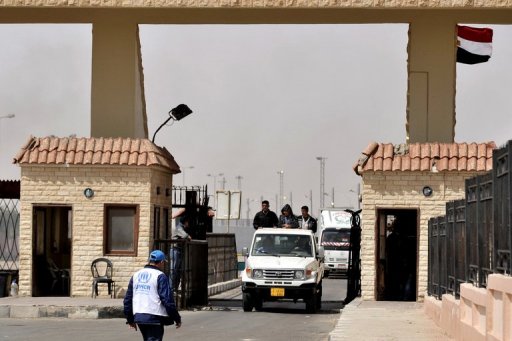By Amira Salah-Ahmed
The summer months of 2010, coinciding with the busy month of Ramadan, were characterized by repeated power outages, which highlighted the need for more investments in Egypt’s energy sector — an item high on the government’s agenda as demand soars.
A number of projects are in the pipeline, chief among them is the country’s first nuclear power plant, which is scheduled to be fully operational by 2019. A recent statement by Energy Minister Hassan Younes said that Egypt also plans to build three more nuclear plants by 2025.
Egypt has postponed the opening of the international bid for its first nuclear power plant in El-Debaa until January 2011, expected to cost between $1.5 billion and $1.8 billion.
Trade and Industry Minister Rachid Mohamed Rachid recently confirmed that Russia will participate in the tender for the nuclear power plant. Russia will also reportedly help finance the project.
In line with plans to generate 20 percent of its power from renewable energy sources by 2020, the government is forging ahead with a plethora of energy projects, with a focus on renewables.
Through various projects, Egypt had expected to add an estimated 2,660 MW of electricity generation capacity to its national grid by the end of 2010, namely with the launch of the Koraymat power station, offering 120 MW of conventional generation using natural gas and 20 MW of solar power. Furthermore, a steam plant in Nubaria with a capacity of 250 MW was completed along with a seventh unit of the the West Cairo power plant, with the capacity of 350 MW and the full operation of the 120 MW wind farm in Zaafarana.
At the time, Younes said, “This is an effort to meet the increasing demand for energy and deal with the recent power outages;” the main goal being to diversify sources of energy generation.
According to a report by Business Monitor International, Egypt will invest $110 billion in power infrastructures from 2010 to 2027 and will look to attract investments of $110 billion into its power sector by 2027.
Late in the year, Egypt said it will launch two tenders in 2011 to build 1,000 MW wind power plants in the Gulf of Suez area to be constructed on a build-own-operate (BOO) basis and tendered over two phases. In January, 500 MW will be tendered and then in July, another 500 MW.
Reuters reported that the output from these power plants will be purchased by the Egyptian Electricity Holding Company through a 20-year agreement and will be sold to consumers at prices set by the Cabinet.
The Cabinet ruled out any change in the prices of butane or in the mechanism of distributing it prior to the completion of a study that is being conducted on the new proposed distribution mechanism. Younes has reiterated the government’s increase of its butane provisions by 25 percent to meet increased consumption up until February 2011.
Leading gas exporting countries said they will hold their first summit in Qatar next year, appointing Oil Minister Sameh Fahmy as the new president of the gas forum, in a bid to develop a stable and transparent gas market. Fahmy said gas exports this year will be unchanged from 2009, as the low prices do not encourage further sales.
Egypt and the World Bank signed several agreements to fund energy projects. Two projects totaling $820 million were “the largest financing provided by the World Bank in support of Egypt’s electricity sector,” according to a statement.
The projects are: Giza North Power Project ($600 million) and the Wind Power Development Project ($220 million).
The African Development Bank (AfDB) Group approved a $550 million loan to finance the Suez steam-cycle thermal power plant project in the country, which involves the construction of a 650 MW steam cycle power plant at a site in the vicinity of Suez city, approximately 150 km east of Cairo.
The power generated from the project, which was approved by the AfDB board on Dec. 15, will be used for industrial and commercial activities.
Two loans were extended by the European Investment Bank (EIB) for an aggregate value of €560 million, of which around €260 million will be geared towards upgrading Egypt’s national electricity grid. The remainder will finance the construction of the planned 1,500 MW North Giza power plant, commissioning of which is expected in the first quarter of 2014.
This plant is part of the five-year (2012-2017) plan that aims at expanding Egypt’s electricity generation capacity to meet the rising demand for energy.
Egypt is branching out its energy investments to neighboring countries, with plans to set up a joint venture to produce 1,700 megawatts (MW) of hydroelectric power in Uganda. The joint venture would fund the generation of 1,000 MW and an Egyptian company was interested in investing in a further 700 MW, according to local reports.

